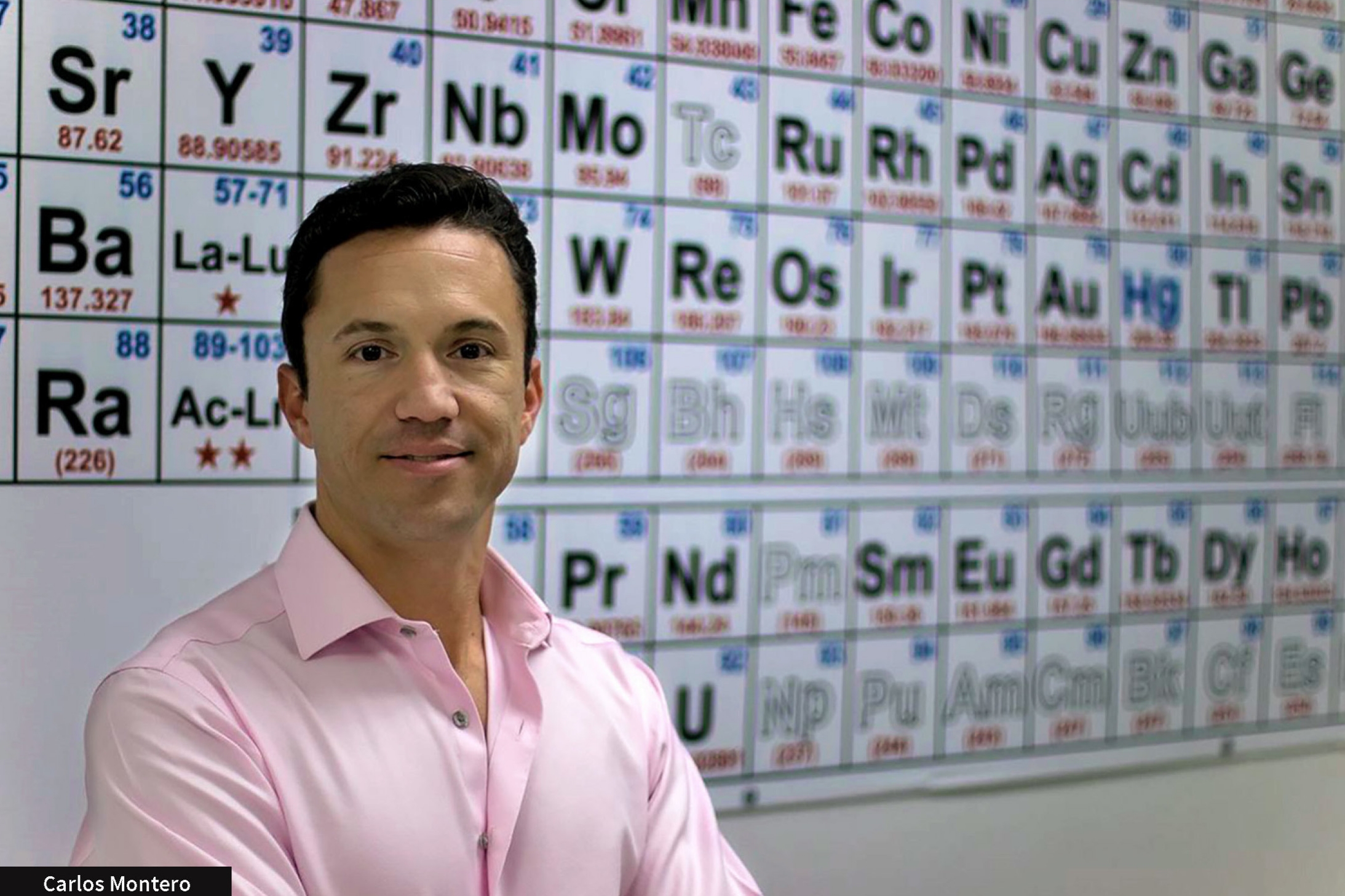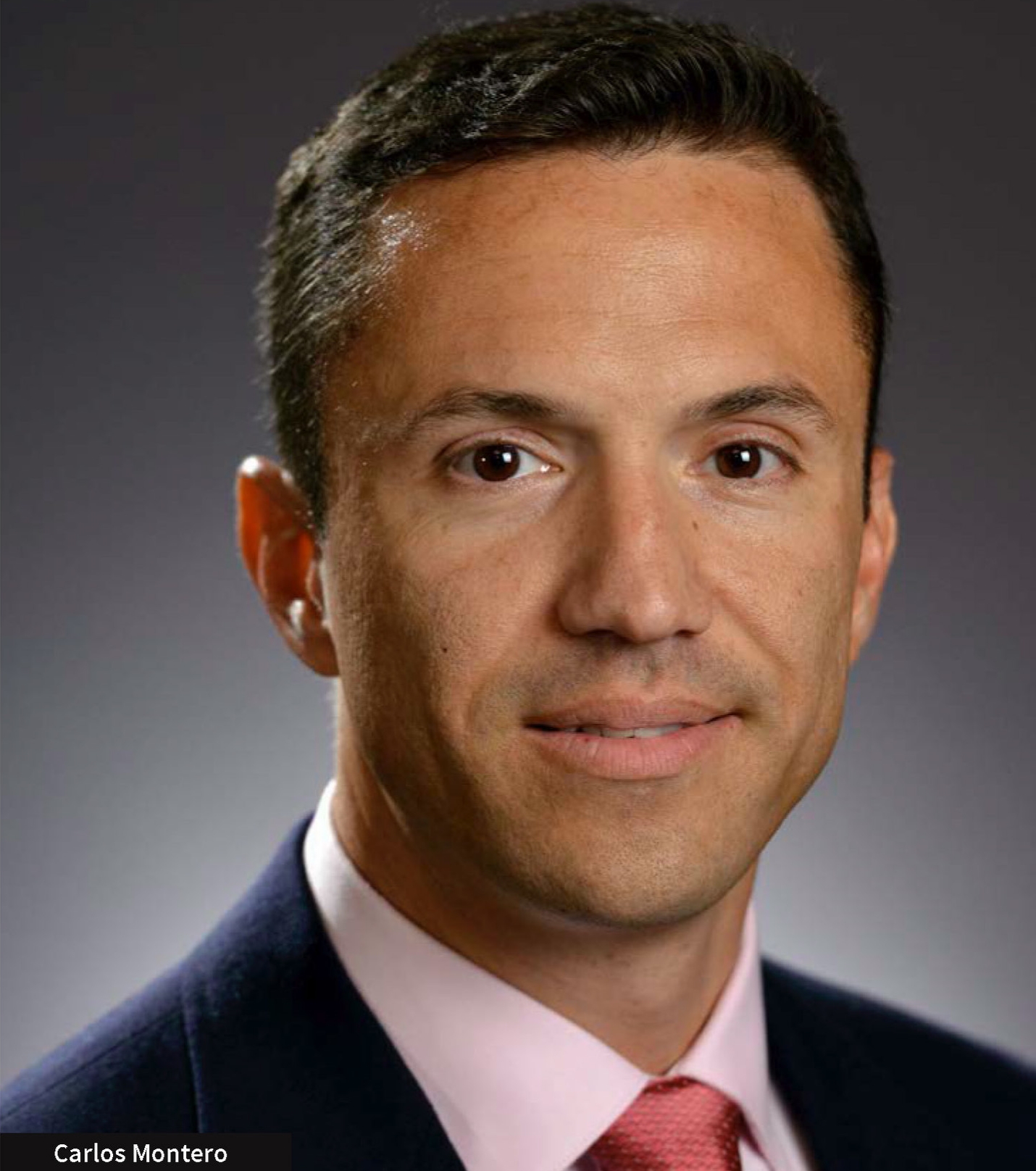Carlos Montero begins his chemistry class with a question like, “What do you think is going to happen if you put a piece of iron metal in a solution of copper chloride?” His high school students ponder the answer. Some try out a hypothesis. Others stay quiet. Montero and his students then test the situation. He asks students to explain the results of the test. They get into groups, sometimes drawing out answers on their portable white boards. A discussion ensues.

Carlos Montero begins his chemistry class with a question like, “What do you think is going to happen if you put a piece of iron metal in a solution of copper chloride?” His high school students ponder the answer. Some try out a hypothesis. Others stay quiet. Montero and his students then test the situation. He asks students to explain the results of the test. They get into groups, sometimes drawing out answers on their portable white boards. A discussion ensues.
As an AP chemistry teacher and chair of the science department for grades 6-12 at the University School, a K-12 college preparatory school at Nova Southeastern University in South Florida, Montero’s aim is to inspire students to be active, engaged learners. And it is exactly his effective method of teaching—called Modeling Instruction for Science Education—that made him one of 108 teachers across the nation to win the prestigious $10,000 Presidential Award for Excellence in Mathematics and Science Teaching this past summer.
“I was excited to receive the award, although it was a long-time coming,” said Montero, who had been told that he was a finalist for the award back in 2013. “I was in Prague when I got the email. I started celebrating at that time.”
Last summer, Montero met with President Barack Obama who gave him and 107 other teachers their awards in Washington, D.C. While it was an honor to meet the president, Montero’s most memorable moments were with other prize recipients, sharing their classroom success stories with each other. “We were such geeks. It was exciting.”
A Passionate Teacher
Montero is the kind of teacher whose passion and dedication to teaching science is contagious. He is quick to credit his success to his high school science teacher (in his home country of Venezuela) whom he described as funny, knowledgeable and hard-working—a description that seems to fit Montero in the classroom as well. His interest and ability in science qualified him for the national Chemistry Olympiad in his home country, and he was invited to attend the worldwide event in Norway. He would have attended, if he had not come to the U.S., his birthplace (his father was getting a master’s degree at Texas A&M when Montero was born here), to pursue a fully-paid bachelor’s degree in chemical engineering at Penn State, followed by graduate school at the University of Miami.

“I didn’t care too much about research and academia,” Montero said about his career reflections prior to coming to the University School. “But I like working with people and kids and teaching.”
A School within a University
He is currently embarking on his third year at the University School, although he’s been teaching high school students since 2004. His work with high school students at this college preparatory school provides him with the best of two worlds—he has access to high-end science equipment and labs at his school and at Nova Southeastern University whose campus is home to the University School.
Founded in 1971, the University School is an independent K-12 college preparatory school that is connected to Nova Southeastern University, which was established in 1964. NSU is now a research university of 27,000 students and provides the 800-student high school of the University School with access to its campus, faculty and facilities.
“We are mostly in our own labs and building, but there is a great cross over with the college professors who have helped our students do research. I am also securing time for our Organic Chemistry Lab to use their very expensive equipment,” said Montero. “Many of their school psychologists and engineering students work with our students. We also use robotic labs where students build things, and we are only scratching the surface of the relationship and collaboration we have with the college.”
Modeling Instruction: Key to Success
When Montero first entered the teaching profession, he was not—he professed—a good teacher. “I don’t think I would have been a teacher if I hadn’t encountered this method of teaching,” he said, referring to Modeling Instruction. “I am now applying its principles of inquiry. It’s not easy to let go of the reigns and help students figure out answers for themselves.”
Modeling Instruction, first developed in 1990 by David Hestenes, emeritus professor of physics, Arizona State University, provides science teaching an alternative to passive education. It organizes courses around a small number of scientific models and applies structured inquiry techniques to teach basic skills and practices in mathematical modeling, proportional reasoning, quantitative estimation and technology-enabled data collection and analysis.
“When I began teaching this method, the kids began thinking and talking to each other and being engaged,” said Montero who harshly criticizes passive learning and claims that today we are dealing with an epidemic of a lack of attention in education. “I try to teach students to take risks to not be afraid to come up with creative ideas. They sometimes come up with answers on their own that scientists took years to discover to become famous. And once we develop a model as to why things happen, we apply it to other situations.”
Montero is now responsible for hosting three-week summer workshops in Modeling Instruction for other teachers in South Florida. He also began STEM Teachers South Florida, an organization where best modeling practices are shared, and he serves on the Executive Board of the American Modeling Teachers Association.
Students Discover Their Capacities
While Montero teaches Hispanic students in his classroom, Hispanics only make up 25 percent of his class. He does, however, work with a large percentage of Hispanic faculty, and those students he does have, have gone on to do great work. “Some of my top students have been Hispanic. I have one that just enrolled in MIT,” he said. “Those Latinos who catch the passion of science can be just as good, or better, than other students.”
Creating an interest and passion in a subject that Montero holds dear is central to his work with Latinos and with all students. “My small cog in this giant wheel is to improve what happens in the classroom. My goal is to build models in how to teach and reach the middle school and elementary students,” he said. “A lot of science teaching could be better, yet people don’t know how to teach it. I’ve had students, especially girls, tell me they won’t be good at this—a lot of them are trained to be good at copying what the teacher says and repeat it—but I tell them to keep trying. They can lash out at teachers saying they are not teaching, but in the end these students often come back and admit that they didn’t think they could do it, and now they can.”